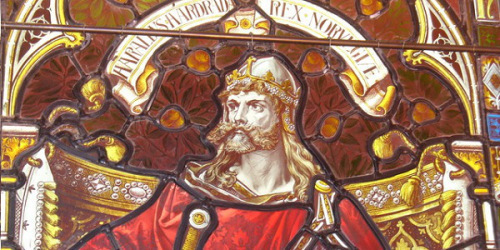King or Earl? Quirks of the Viking Hierarchy
The conclusion the the History Channel’s Vikings left audiences with the impression that their fictional protagonist Ragnar had attained greater status as a result of slaying his former ally King Horik. Is he King? Is he still Earl? What’s the difference? Ambiguity on the part of the writers seems appropriate considering the historical structure of hierarchy in Viking Age Scandinavia. Titles among the ruling class remained inconsistent across Scandinavia throughout the Viking Age, which would eventually cause dissolution and discord among rival kingdoms whose claims of legitimacy over the other partly rested in their self-concept of their title and power.
Each region in Viking Age Scandinavia operated slightly differently than the other. Preceding the Viking Age, Vestfold (modern Norway), and Jutland (modern Denmark) were loose confederations of smaller farm owners who elected a chieftain or leader to make certain legal decisions typically regarding land disputes, feuds, and rights of inheritance. As the weather improved and population soared closer to the outset of the Viking Age, the dynamic of the political structure of each changed dramatically. In Jutland, a presiding king ruled by consent over Jarls — or earls — who managed each individual settlement. For example, in 815 A.D. Jutland was ruled by a certain King Horik, and his time was primarily spent visiting with and ruling through the various Jarls under him. Most prominent among these Jarls was the Jarl of Hedeby who frequently contended with the encroaching and bellicose Frankish army based outside of Hamburg.
In Vestfold, every farmstead leader seems to have thought of himself as king. In the sagas pertaining specifically to Vestfold, we encounter petty kings, but still all self proclaimed kings. For example, the ruler of a small region on the coast of Vestfold named Agder was known as King Harald Granraude. Agder had but one farmstead named Tromoy, thus making King Harald king of one farmstead. We must keep in mind, however, that the term farmstead when referring to the Viking Age signifies a larger than average agricultural settlement; a town of sorts. Further inland, Harald Granraude’s rival Gudrod the Magnificent (Halfdansson) was also king. He presided over more farmsteads and more people, but the title remained the same. This division in the political system of Vestfold which allowed any man with the least amount of power to proclaim himself a king caused constant inter-farmstead warfare. This warfare would not be resolved until much later in the Viking Age when Norway was united under Harald Fairhair.
If this all seems somewhat confusing, that is because it is. There was a lack of consistency across the Viking world and the acquisition of new lands abroad made matters even more confusing (such as the case of Rollo in Normandy). It appears that, with the exception of some places, most petty rulers were legally allowed and encouraged to proclaim themselves king. Thus, it seems, the terms king and Jarl are partly interchangeable (with exceptions of course), if not altogether illogically allocated.
Would you like to meet king Horik and Gudrod the Hunter? Then read The Line of His People, and epic historical fiction adventure set in the early Viking Age!






